Legends quoted, “Time changes everything; no one can stop it!”
Similar is the story of Byju’s, where an ordinary tuition class evolved into India’s biggest ed-tech platform only to plunge dramatically…

How Byju’s went from 0 to billions to 0? You may wonder. Well, that’s a bit long and interesting story. Also, you can learn many lessons from it. So, without any delay let’s dive into Byju’s case study!
(A) Phase 1: Byju’s Journey from 0 to Billions
Officially, Byju’s (Think and Learn Private Limited) founding stone was laid in 2011. But its beginning began a few years before its official launch.
So here is the story-
(A.1) Early Beginnings of Byju
Byju Raveendran, an ordinary mechanical engineer with extraordinary problem-solving skills was preparing for CAT (Common Admission Test for admission in IIMs). In 2006, he cleared the exam with flying colors.
But his mind was admiring something else. What was that? Sharing the knowledge with others!
So instead of pursuing an MBA from IIMs (considered highly reputed institutes), he began teaching CAT aspirants in his native place Azhikode (a village in Kerala).
He didn’t stop there. Byju traveled to different cities to conduct free workshops, especially for CAT applicants.
His exceptional teaching methods caught students’ eyes, making him a reputed teacher. As you know, when your skills and actions speak, you don’t need to do any marketing. You get the privilege of word-of-mouth marketing just like Buyju Raveendran received!
The number of students began to increase exponentially leading to the foundation of an ed-tech startup called Byju’s!
(A.2) Byjy’s- The Learning App: Launch & Success

Raveendran Byju’s teaching had numerous distinct features such as-
- Ensuring 100% learning
- Unconventional teaching style
- Simplifying the complex topics
- Deep knowledge of the topics
Along with these, Byju decided to incorporate technology into his teaching method. So, instead of using markers & whiteboard, he switched to animations and PowerPoint presentations for teaching students.
This was a remarkable upgrade that helped him to expand his audience.
Soon the term “Byju’s” became a brand and the official foundation was laid in 2011.
Do you know, Byju grabbed a rank in Deloitte Technology Fast 50 India and 500 Asia Pacific in 2012? To the uninitiated, let me tell you that the Deloitte rating is given to the fastest-growing tech companies.
Seeing the success of tech usage, he finally launched Byju’s- The Learning App in 2015.
His goal? To make education personalized, engaging, and accessible to students in every part of the country.
(A.3) How has Byju’s Learning App added innovation in Learning?
Buju’s app was a tight slap on the fact of the traditional and ineffective education system of India. How? Many things can’t be understood through chalk and blackboard. This is one of many loopholes in the conventional education system.
Byju saw this as a golden opportunity and incorporated interactive videos, animations, riddles, and modern and adaptive learning techniques in its modules.
This made the Byju’s app superhit and popular among Indian students.
(A.4) Skyhigh Success of Byju’s

By the year 2016, Buyu entered its golden days when every positive thing was growing like downloads, subscribers, user base, etc.
Here is what this ed-tech company claimed in the year 2016-17-
- App downloads: 5.5 million
- Annual Subscribers: 250,000
By the year 2018, its userbase exploded to 15 million out of which 900,000 were paid subscribers. Not just that, over 60% of Byju’s students hailed from tier 2 & 3 cities and rural areas.
(A.5) Revenue & Valuation
How can we forget the revenue and valuation here? In FY18, Byju’s posted a revenue of $69.4 million (Rs.490 crore). It was a 97% jump from FY17. Byju attained a massive valuation of $2 billion
By the year 2022, its revenue boomed to Rs.3,569 crore. It had mainly 3 revenue sources viz-
- Tuition & Service Fees
- Sale of Study Materials (Books & Notes)
- Sale of gadgets (SD Cards & Tablets)
Simultaneously, its valuation reached up to $22 billion in October 2022. That’s how a firm started by a rural man became on the the most popular unicorns of India!
(B) Phase 2: Byju’s Journey from Billions to 0
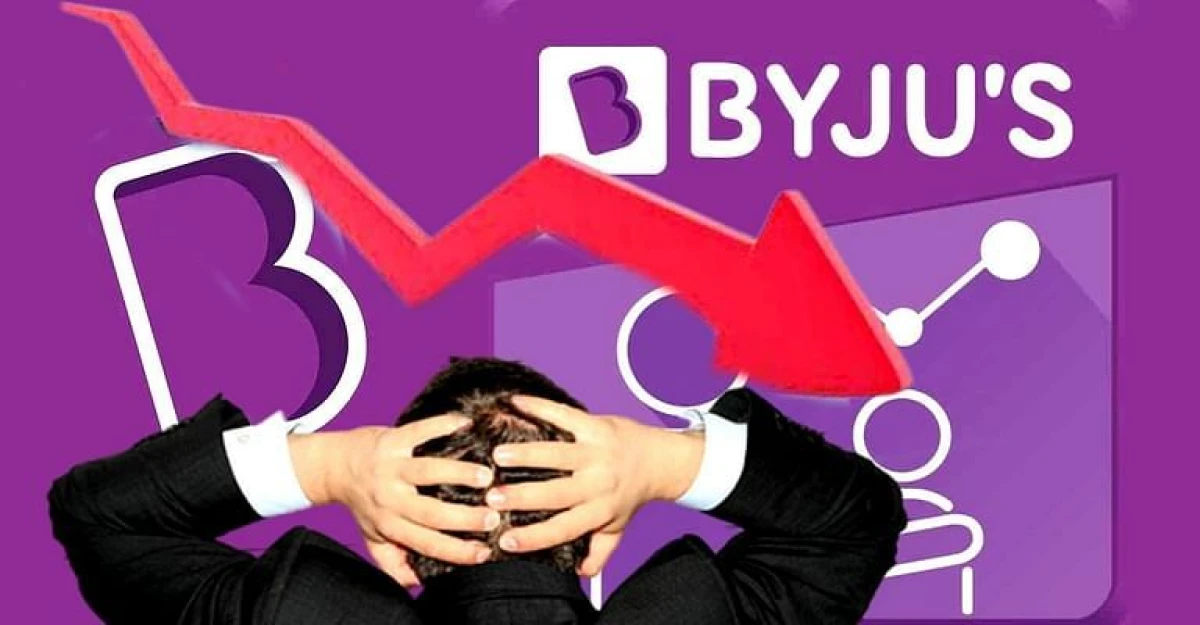
To be clear, the downfall of Byju’s began in the days of 2020 when it was already going through a golden phase. How? You may as. Well, on the bright side where Byju was earning sky-high revenue. But on the flip side, it was slowly drowning in losses.
Losses & Steep Downfall of Byjus’
Hold on, and look at the losses it made in all these years-
- FY16: Rs.49 crores
- FY18: Rs.37.1 crore
- FY19: Rs.8.82 crore
- FY20: Rs. 262.1 crore
- FY21: Rs.4,588 crore
Can you see the 18x jump in losses from FY20 to FY21? What’s the reason behind this? There is not one or two but multiple reasons behind Byju; ‘s downfall.
Reasons for Byju’s Downfall
Let’s look at the reasons and the factors responsible for Byju’s downfall one by one-
(B.1) Heavy Spending on Marketing
Byju’s faced a big problem with its spending on ads and promotions. In 2021, they spent a whopping amount on marketing, even more than what they earned. Their flashy campaigns with celebrities like Shahrukh Khan and Lionel Messi drained their funds. Can you imagine these promotional expenses gulped 32% of total expenses? In short, Byjus was focused more on marketing and ads instead of focussing on the teachers, students, and overall functioning.
(B.2) Illicit Sales Methodology & Loss of Trust
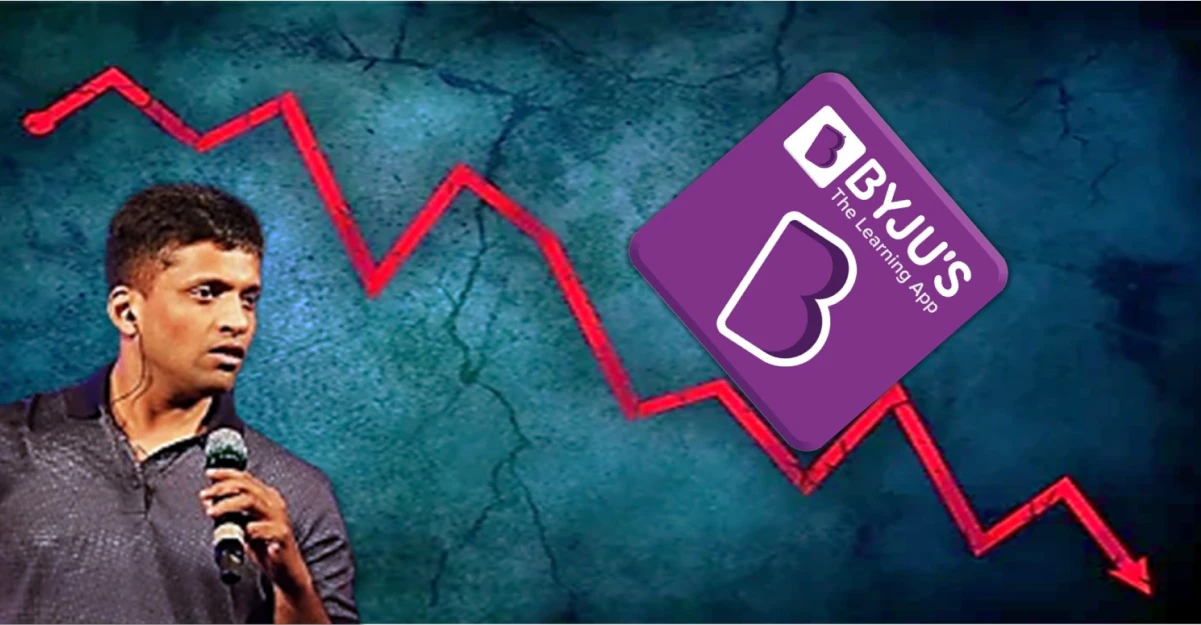
In the above section, you have seen how the user base of Byju’s increased rapidly! Do you think it is organically/naturally possible? I mean not everyone is going to prioritize a tuition class over an authentic school education. And here is another point to ponder. Over 60% of Byju’s students belong to rural areas.
In villages, people can’t even afford school fees or ordinary tuition. Then, how come they admitted their children to modern and expensive ed-tech like Byju’s?
Here comes a mind-blowing fact.
Byju used illicit and unethical sales practices. They instill fear in the villagers or middle-class parents saying “This world is highly competitive and we offer the best education. If your child doesn’t learn from our classes, he will definitely fail…”
Can you imagine it from a parent’s perspective? How stressful it would be to imagine such an unfortunate future for their precious children!
Byju’s sales personnel exploited the emotions of parents. And this factor made people to lose their trust in Byju’s.
(B.3) Financial Troubles
Look at another legendary quote- “When a teacher becomes a businessman in the greed of money and trades holy knowledge, it brings catastrophe to him and his surroundings!”
Don’t you find any similarity between this quote and Byju’s founder? When he was a teacher, people admired him and got the advantage of word-of-mouth marketing.
As soon as he became a billionaire and mishandled money, he entered into the rough patch!
Not only he didn’t file financial reports on time but also continued to lay off his hardworking employees. This raised the suspicion of hiding millions of dollars from shareholders and auditors. Later it was proved to be true!
Also, there were issues with foreign exchange rules.
(B.4) Bad Reviews of Byju’s Education during the Pandemic
During the lockdowns of the Covid pandemic, everything became online including work, business, and teaching. This could have been a golden opportunity for Byju but alas… it turned out to be a tragic fate!
The quality of Byju’s education turned so bitter that children couldn’t understand a single concept.
Surprisingly, students ditched Byju’s for traditional classes due to bad reviews. Revenue in India plummeted by 38%, but the US and Middle East business grew. Byju kept buying companies like WhiteHat Jr. and Akash Institute, adding to their losses.
Note: We have thoroughly explained Byju’s acquisitions here- List of Byju’s Subsidiaries to get deep insights.
(B.5) Risky Loans
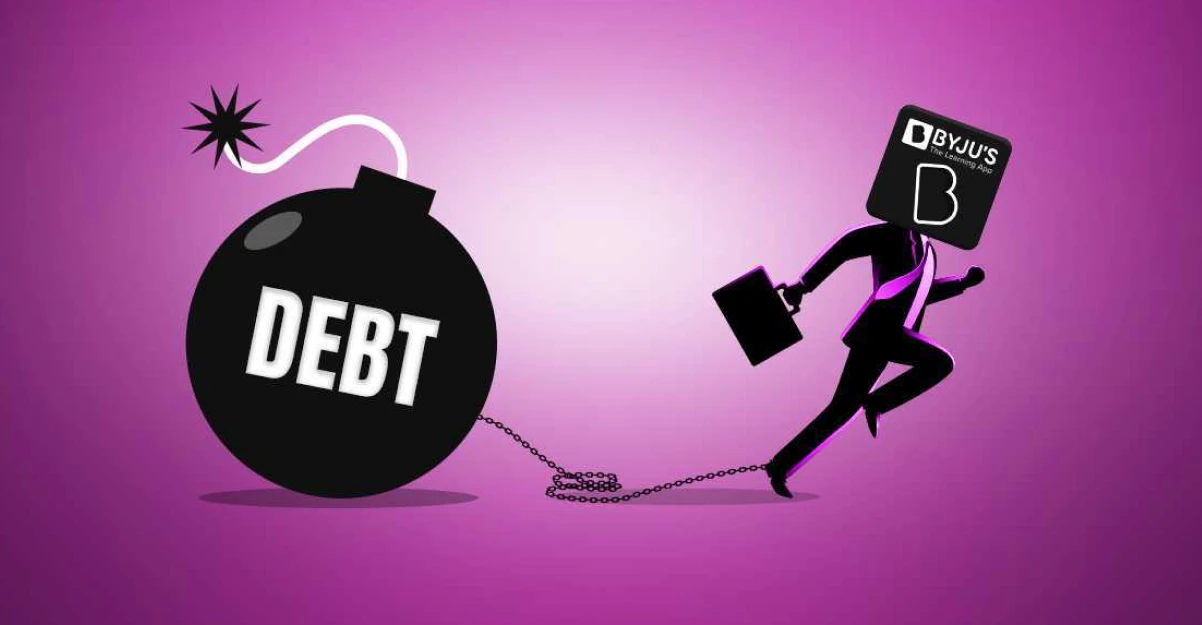
Byju took risky loans with high-interest rates, banking on the US’s low rates. But when rates spiked due to world events, their debt burden ballooned. They struggled to repay, facing pressure from lenders and legal troubles.
Let me explain it thoroughly- In 2021, Byju’s faced a tough situation when they opted for something called a Term Loan B. It was a bit risky, but tempting, as the United States was offering loans at super-low interest rates because they were injecting a lot of money into their economy.
Imagine getting a loan with small payments at first, but then having to pay a big chunk later. It’s like borrowing money and hoping your business does well enough to pay it back later.
Byju’s managed to snag a whopping $1.2 billion in July 2022, thinking they’d sort out their financial reports by August. But things didn’t go as planned. They ended up delaying their financial reports, and then the Russia-Ukraine war happened, causing interest rates to shoot up.
This made it harder for Byju’s to pay back the loan. To make matters worse, the loan’s value dropped a lot, and they had to sit down with the lenders to figure out how to repay it.
On top of all this, Byju’s had some internal problems, like delays with their auditors and some key people leaving the company. They also got into legal trouble, which made it even harder for them to keep things running smoothly and pay their employees. Tough times, indeed.
(C) Takeaways from Byju’s Case Study
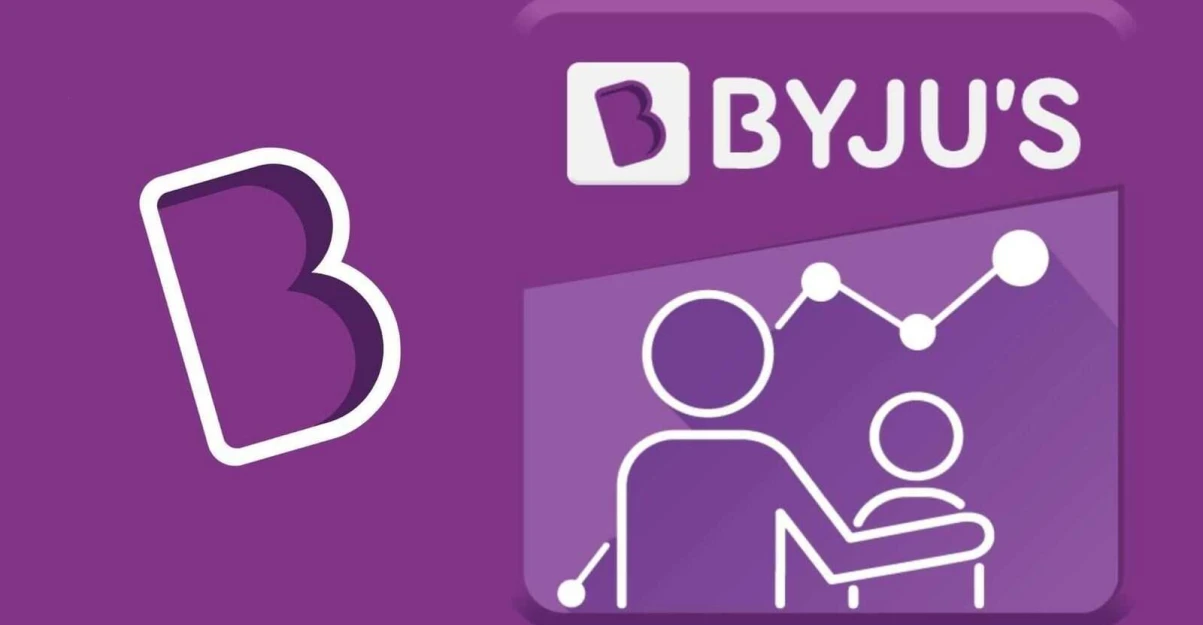
Here comes the most anticipated part of this article. When we go through a case study, our goal is to analyze the journey of a company and to study/learn the factors that lead to its success and failure.
So, here are the key takeaways from Byju’s case study that will help you to reach your business goals better-
- Start with a Purpose: Byju’s began with a clear purpose of improving education, highlighting the importance of starting a venture with a genuine mission.
- Innovation Matters: Byju’s success was fueled by innovative teaching methods and technology integration, showing the importance of innovation in staying ahead in the market.
- Ethical Practices: You must never forget your ethics in any kind of business because it determines whether you are trustworthy or not. Byju’s downfall due to unethical sales tactics underscores the significance of maintaining ethical standards in business operations. They lost the trust of the audience as well as shareholders.
- Financial Management: Byju’s financial mismanagement serves as a lesson in the importance of sound financial planning and transparency.
- Adaptability & Quality: Byju’s experience during the COVID-19 pandemic emphasizes the need for businesses to be adaptable and good quality in the face of unexpected challenges.
- Balanced Growth: Byju’s aggressive expansion and acquisition strategy led to financial strain, highlighting the importance of balanced growth and sustainability.
- Learning from Mistakes: Byju’s journey showcases the importance of learning from mistakes and setbacks and continuously evolving to meet changing market dynamics.
Hence, Buju’s faces a tough road ahead. Its founder Raveendran Byju is not a billionaire anymore…With challenges in marketing, finance, trust, etc., it will be interesting to see if Byju can regain its fame and top spot in India’s education market or not!

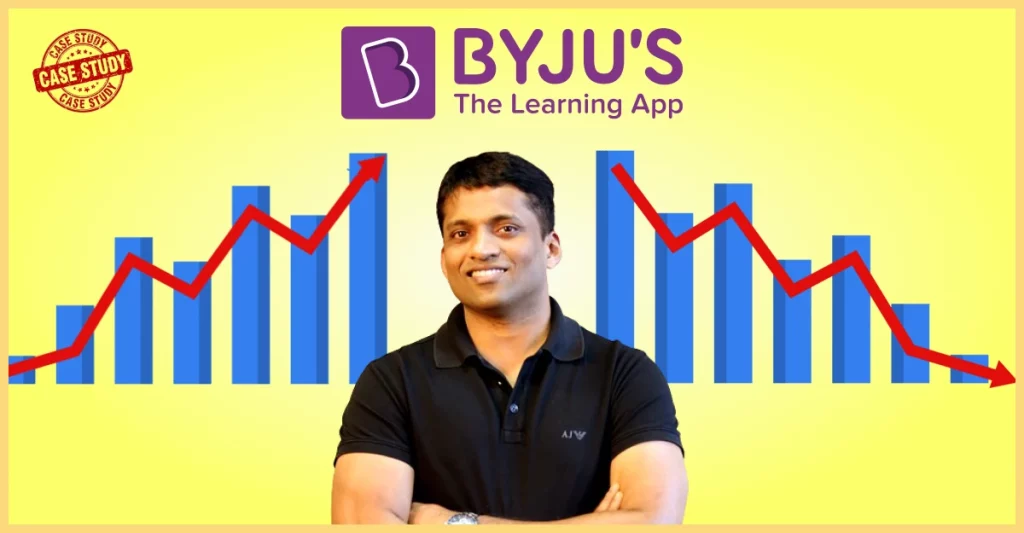
My cousin also joined Byjus to have a better hold on his subjects, initially they teached well but later on it was all in vain!
Same here! They taught well during demo sessions but once you pay for the course, they turn a blind eye to our doubts ☹️☹️